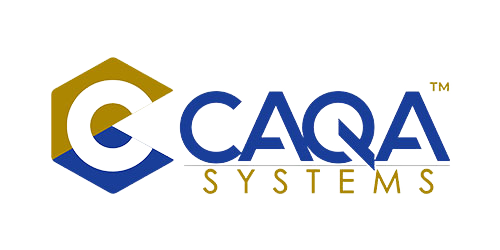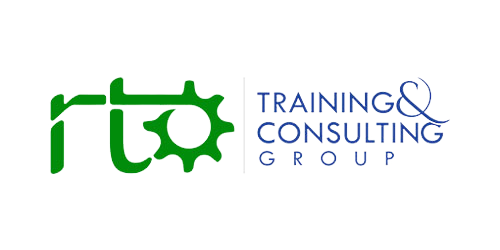The Dual Crisis of Housing and Skills
Australia faces a complex and interconnected challenge at the intersection of housing affordability and workforce capability. As housing policy once again dominates federal election discussions, attention has turned to a critical but often overlooked barrier to increased supply: a persistent shortage of skilled construction workers. For vocational education providers, understanding this relationship between skills development and housing outcomes offers important context for evolving training priorities. As RTOs prepare for the July 2025 standards implementation, auditors may evaluate how effectively providers are addressing these workforce capability gaps while maintaining quality training aligned with industry needs.
The scale of Australia's housing challenge has reached unprecedented proportions, driven by record population growth and persistent supply shortfalls. The national target of 1.2 million new homes over five years (2024-2029) represents an ambitious acceleration in construction output, yet projections suggest a growing supply deficit potentially reaching nearly 200,000 units by 2027. With 97% of this construction target relying on private sector delivery, industry capacity constraints directly impact housing affordability outcomes for millions of Australians.
At the heart of these capacity constraints lies a workforce paradox: despite construction employment reaching 1.37 million people (9% of the national workforce) and growing by over 51,000 workers in the past year alone, persistent skills shortages continue limiting productivity and output. This paradox reflects deeper structural issues within the construction workforce, including qualification gaps, demographic imbalances, and training completion challenges that vocational education must address through both immediate interventions and longer-term systemic improvements.
The Construction Workforce: Structure and Challenges
The construction industry's workforce structure reveals several distinctive characteristics that both contribute to current challenges and shape potential solutions. Understanding these structural elements provides essential context for vocational education providers developing targeted training responses.
Size and Growth Trends
Construction represents Australia's third-largest industry by employment, with 1.37 million workers as of May 2024—approximately 9% of the national workforce. This substantial employment base has shown consistent long-term growth, expanding by more than 550,000 workers since 2005. Recent growth has been particularly strong, with the sector adding over 51,000 workers (3.9% increase) in the past year alone, though with some geographic variation, as Victoria and Queensland experienced small workforce contractions.
This growth trajectory suggests the industry continues attracting new entrants despite challenging conditions, potentially creating opportunities for vocational education providers to convert this interest into qualified participation through appropriate training pathways. When developing workforce development strategies, RTOs should consider this demonstrated capacity for employment growth alongside persistent qualification gaps.
Demographic Limitations
Despite its size and growth, the construction workforce exhibits significant demographic narrowness that limits its potential capacity. Women represent just 13.6% of the overall construction workforce and a mere 3.1% of trades workers, highlighting a substantial gender participation gap compared with most other industries. Additionally, the median age exceeding 40 years reflects an aging workforce with significant projected retirement outflows in the coming years.
These demographic limitations create both challenges and opportunities for vocational education providers. The substantial gender participation gap represents potential untapped capacity that could help address skills shortages if appropriate training and employment pathways were developed. Similarly, the aging workforce creates succession planning imperatives requiring accelerated skills development for younger workers entering the industry. When auditors evaluate workforce participation initiatives under the 2025 standards, evidence of strategies addressing these demographic limitations may demonstrate particular provider responsiveness to industry needs.
Qualification and Completion Challenges
Perhaps most significantly for vocational education, the construction workforce exhibits substantial qualification gaps and training completion challenges that directly impact skill availability. Approximately 35% of construction workers lack formal qualifications despite performing skilled work, creating potential quality, safety, and productivity implications. This qualification gap reflects both historical workforce entry patterns and persistent training completion challenges.
Current apprenticeship statistics highlight these completion challenges, with apprenticeship numbers declining 1.7% to 116,560 by December 2023, and completions dropping 14.7% to just 21,415 in 2023. The longer-term completion rates appear even more concerning, with just 53.4% of trade apprentices commencing in 2018 completing their studies, and actual contract completion rates at only 42.2%. This "leaky pipeline" means that for every ten apprentices who start construction training, fewer than five emerge with qualifications.
For vocational education providers, these completion statistics highlight the importance of retention strategies alongside initial recruitment—a consideration that may influence both program design and support services. When evaluating training quality under the 2025 standards, evidence of effective retention and completion strategies may demonstrate particular provider effectiveness in addressing industry skills needs.
Policy Responses: Recognition and Acceleration Pathways
Responding to these workforce challenges, policymakers have introduced several initiatives aimed at accelerating skills development and recognition. Understanding these approaches helps vocational education providers align their strategies with broader policy directions while identifying potential implications for their training delivery.
The Advanced Entry Trades Training Program
The recently announced Advanced Entry Trades Training program represents a targeted response to construction workforce qualification gaps. Scheduled to commence in 2026 with $78 million funding, the program aims to fast-track formal trade qualifications for approximately 6,000 experienced but unqualified workers through recognition of prior learning (RPL) processes combined with free gap training.
Modelled on the New South Wales Trade Pathways for Experienced Workers Program, which reportedly enabled 1,200 students to earn qualifications in an average of seven months rather than several years, the initiative targets workers currently in the industry without completed apprenticeships and skilled migrants whose capabilities remain unverified. According to industry analysis, each newly qualified tradesperson potentially enables the construction of an additional 2.4 homes annually, suggesting the program could support the delivery of over 14,000 additional homes each year once fully implemented.
For vocational education providers, particularly TAFEs and RTOs likely to deliver components of this program, the initiative creates both opportunities and challenges. The expanded RPL focus may require capability development for assessment and gap training design, while the compressed timeframes demand efficient delivery models. When developing implementation strategies, providers should consider both capability requirements and potential volume implications for their delivery capacity.
Recognition Pathways for Skilled Migrants
Recognition of prior learning pathways holds particular importance for skilled migrants, potentially enabling them to gain Australian-recognised qualifications without lengthy study periods. These pathways support skilled visa applications (including subclasses 189, 190, and 491), improve employability, and help meet licensing requirements, particularly important in construction, where formal licensing often restricts practice.
However, current RPL processes for skilled migrants face significant efficiency challenges, with the Parkinson Review finding these processes can take up to 18 months and cost over $9,000. These extended timeframes and substantial costs create barriers to workforce integration that limit the potential contribution of skilled migrants to addressing construction industry shortages.
For vocational education providers with capabilities in construction skills assessment and recognition, these challenges may represent opportunities for service development, addressing efficiency and accessibility limitations in current processes. When auditors evaluate RPL processes under the 2025 standards, evidence of streamlined approaches addressing these barriers may demonstrate particular provider innovation in skills recognition.
Apprenticeship Incentives and Support
Beyond recognition pathways, various incentives and support mechanisms aim to address the "leaky pipeline" of apprenticeship completions. These approaches typically combine financial incentives for employers and apprentices with mentoring and support services designed to address common completion barriers, including workplace challenges, financial pressures, and learning difficulties.
Despite these initiatives, the persistently low completion rates suggest current approaches may be insufficient to address underlying retention challenges. The nearly 50% non-completion rate represents substantial wasted investment and missed opportunity for both individuals and the broader industry, highlighting the need for more effective retention strategies.
For vocational education providers, these completion challenges emphasise the importance of integrated support services alongside technical training delivery. When evaluating training quality under the 2025 standards, evidence of effective retention strategies addressing common completion barriers may demonstrate particular provider effectiveness in supporting industry capability development.
Structural Barriers to Supply
While skills development initiatives address important workforce capability gaps, several broader structural barriers further constrain housing supply and exacerbate affordability challenges. Understanding these systemic issues provides important context for vocational education providers seeking to connect their training initiatives with industry needs.
Productivity and Scale Challenges
The construction industry has experienced a concerning long-term productivity decline, with construction productivity falling by 53% over the past 30 years (measured as dwellings completed per hour worked)—even as overall labour productivity in Australia rose by 49%. This declining productivity amplifies the impact of skills shortages by reducing output per worker, effectively requiring more workers to deliver the same housing volume.
This productivity challenge relates partly to industry structure, with 98.5% of construction businesses having fewer than 20 employees, and 59% having no employees at all. The majority (56%) turn over less than $200,000 annually. While this small-scale structure offers flexibility benefits, it creates challenges for innovation adoption, technology investment, and structured training provision that might otherwise enhance productivity.
For vocational education providers, these productivity challenges highlight the importance of incorporating technology skills, process improvement capabilities, and management training alongside traditional technical competencies. When developing training content under the 2025 standards, evidence of such productivity-enhancing components may demonstrate particular provider alignment with industry improvement needs.
Cost and Regulatory Constraints
Beyond workforce and productivity challenges, the construction industry faces escalating material costs, regulatory complexity, and approval delays that further constrain supply. Homebuilding costs rose 3.4% in 2024, continuing an upward trend, while planning approval processes, particularly in New South Wales, remain Australia's slowest, adding significant holding costs and project delays.
These broader constraints create important context for vocational education providers, as they highlight that workforce development alone cannot solve housing supply challenges. While training initiatives remain essential, their effectiveness ultimately depends on complementary reforms addressing these broader systemic barriers to construction productivity and output.
Strategic Responses for Vocational Education
Given these complex challenges and policy directions, several strategic responses appear particularly relevant for vocational education providers seeking to address construction skills shortages while preparing for the 2025 standards implementation.
Expanded Recognition Pathways
The policy emphasis on recognition pathways suggests vocational education providers should consider expanding and streamlining their RPL processes for construction qualifications. Effective approaches might include standardised assessment tools for common construction roles, accelerated assessment processes for experienced practitioners, and flexible gap training delivery options accommodating working candidates.
For providers with established construction programs, developing specialised RPL capabilities aligned with the Advanced Entry Trades Training program may create significant opportunities while addressing critical industry needs. When auditors evaluate RPL processes under the 2025 standards, evidence of streamlined, accessible approaches for construction workers may demonstrate particular provider responsiveness to policy priorities.
Retention-Focused Program Design
Given the persistent challenges with apprenticeship completions, vocational education providers should consider program designs specifically addressing common retention barriers. Approaches might include integrated support services addressing financial, learning, and workplace challenges; milestone recognition, creating interim achievements during lengthy apprenticeships; and employer engagement programs enhancing workplace support for learners.
These retention-focused designs recognise that simply enrolling more apprentices cannot solve skills shortages if completion rates remain below 50%. By targeting the "leaky pipeline," providers may generate stronger completion outcomes from existing enrolment volumes. When evaluating training quality under the 2025 standards, evidence of such retention-focused program designs may demonstrate particular provider effectiveness in addressing industry capability needs.
Demographic Expansion Initiatives
The substantial gender participation gap in construction trades represents potential untapped capacity that vocational education providers might help activate through targeted initiatives. Effective approaches might include women-focused entry programs addressing common barriers, industry partnerships creating supportive workplace opportunities, and visible success models demonstrating viable career pathways for women in trades.
Similar initiatives might target other underrepresented groups, including Aboriginal and Torres Strait Islander peoples, culturally and linguistically diverse communities, and mature-age career changers seeking stable employment opportunities. These demographic expansion approaches recognise that addressing skills shortages requires not just accelerating existing workforce development but expanding the potential participant pool.
Productivity Enhancement Training
Beyond traditional technical training, vocational education providers should consider incorporating productivity enhancement components addressing the industry's declining output per worker. These components might include digital technology skills, process improvement methodologies, project management capabilities, and lean construction approaches that help maximise output from the available workforce.
Such productivity-focused content recognises that simply producing more qualified workers cannot fully address housing supply constraints if each worker's output continues declining. By enhancing individual productivity alongside technical competence, providers potentially amplify the impact of their skills development contribution. When developing training content under the 2025 standards, evidence of such productivity-enhancing components may demonstrate particular provider alignment with industry improvement needs.
Future Outlook: Balancing Immediate Needs and Systemic Change
As vocational education providers navigate these complex challenges, balancing immediate skills needs with longer-term systemic improvement becomes a central consideration. Several specific developments merit attention when developing strategic responses:
Advanced Entry Program Implementation (2026)
The planned 2026 implementation of the Advanced Entry Trades Training program creates immediate preparation imperatives for providers potentially delivering components of this initiative. Developing appropriate assessment tools, gap training models, and delivery capacity represents a priority focus for the coming year, potentially requiring capability development and resource allocation planning.
Providers should consider not just compliance aspects but also how to maximise quality and completion within the program's accelerated timeframes. When auditors evaluate RPL processes under the 2025 standards, evidence of preparation for this significant initiative may demonstrate particular provider responsiveness to industry needs.
Housing Target Milestones (2024-2029)
The 1.2 million homes target establishes specific annual completion milestones that will drive workforce demand patterns over the five-year period. While the overall target appears challenging given current constraints, year-by-year delivery pressure will influence industry demand for both entry-level and skilled workers throughout this period.
For vocational education providers, these progressively increasing output expectations suggest potential for growing demand for construction training across both traditional apprenticeship and accelerated recognition pathways. When planning provision over this period, providers should consider how changing output expectations might influence both volume requirements and priority skill areas.
Productivity and Technology Transformation
Beyond immediate workforce expansion, longer-term industry transformation through productivity improvement and technology adoption represents a crucial direction for addressing housing supply constraints. Areas including prefabrication, modular construction, digital building technologies, and advanced materials offer potential productivity enhancements that could significantly increase output per worker.
For vocational education providers, these transformation directions suggest evolving skill requirements beyond traditional trade competencies. Incorporating emerging technologies, digital capabilities, and adaptive skill foundations within current programs helps prepare graduates for this evolving landscape rather than simply replicating historical approaches. When developing training content under the 2025 standards, evidence of forward-looking technological components may demonstrate particular provider alignment with industry transformation needs.
Conclusion: Investing in Skills for Housing and Economic Futures
The intersection of Australia's housing affordability challenges and construction skills shortages highlights the critical role of vocational education in addressing fundamental economic and social priorities. By developing effective responses to these workforce challenges, providers contribute not just to industry capability but to broader housing accessibility that affects millions of Australians.
The policy emphasis on recognition pathways, completion improvement, and demographic expansion creates both imperatives and opportunities for vocational education providers preparing for the 2025 standards implementation. Those demonstrating sophisticated responses to these priorities—through streamlined recognition processes, retention-focused program designs, demographic expansion initiatives, and productivity enhancement training—position themselves as valued contributors to addressing these national challenges.
Perhaps most fundamentally, this context highlights vocational education's essential contribution to economic and social outcomes extending far beyond individual career development. When housing supply constraints significantly impact affordability for millions of Australians, effective skills development becomes not merely an industry service but a critical social contribution addressing one of Australia's most persistent challenges.
By developing implementation approaches that balance immediate skills needs with longer-term capability development, forward-thinking providers demonstrate their ability to navigate complex industry challenges while maintaining quality training delivery. When auditors evaluate training quality under the 2025 standards, evidence of such balanced approaches may demonstrate particular provider sophistication in connecting skills development with broader economic and social outcomes.


































